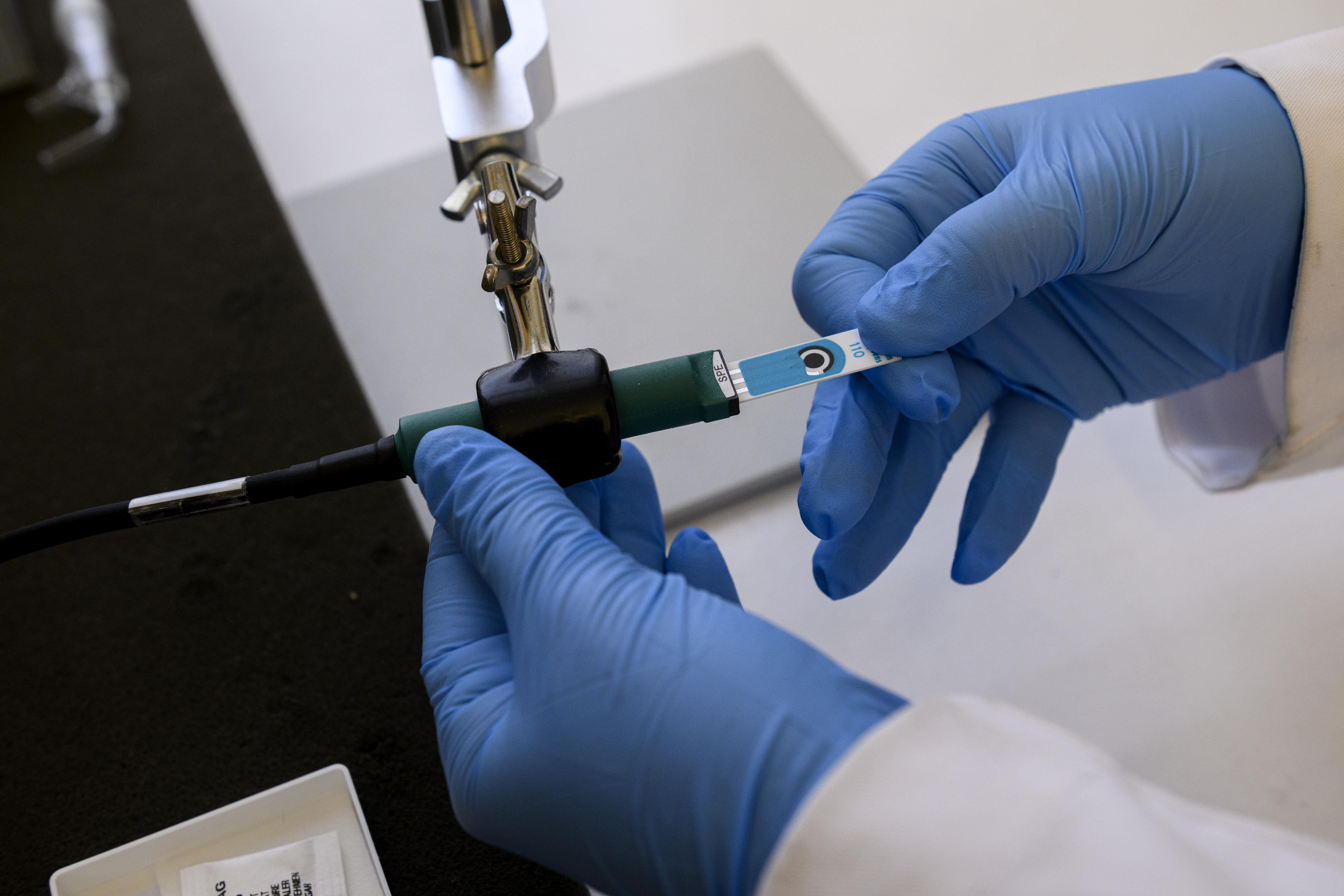In forensic laboratories, samples are often screened for drugs through so-called color tests, designed to change color in the presence of drugs. Although these tests are quick and inexpensive, they are limited because they are non-specific, meaning they do not identify which drug may be present, and can be inconclusive, requiring follow-up testing.
The National Institute of Justice (NIJ) has supported research to better detect and identify drugs for almost two decades.[1] A recently completed NIJ-funded study by Dr. Luis Arroyo, associate professor in the Department of Forensic and Investigative Science at West Virginia University, has continued this work.
Dr. Arroyo proposed to test the use of powerful electrochemical techniques (Figure 1) to detect emerging drugs, such as fentanyl and novel psychoactive substances, in seized drug cases. These techniques are widely used in biomedicine, chemistry, environmental sciences, and many other industrial applications. Dr. Arroyo’s team confirmed their findings using Raman spectroscopy, a non-destructive technique that reveals the structural fingerprint of an unknown substance. They propose that using these methods in tandem could improve current drug screening procedures.
Figure 1. Drug identification using a screen-printed carbon electrode.
Carbon Electrodes Detect Drugs of Abuse
The West Virginia University team sought more informative and cost-effective drug testing techniques, consistent with current forensic laboratory guidelines, that could potentially be used on site and in the field. First, they detected controlled substances using screen-printed carbon electrodes. These inexpensive electrodes use electrical conductivity to assess the presence of a drug and identify it. The researchers also evaluated the usefulness of portable Raman spectroscopy for drug identification. Then they assessed and validated combined data from the electrochemical sensors and Raman methods to better understand their usefulness. When used together, the two methods’ overall identification accuracy of fentanyl and fentanyl analogs was 87.5%,[2] an improvement over color tests which only indicate the possible presence or absence of specific drugs.
“Among the advantages that make these techniques attractive are their versatility, selectivity, sensitivity, ability to analyze samples with minimal or no sample preparation, speed of analysis, low cost, robustness, and portability,” said Dr. Arroyo. These features also make the techniques attractive for both laboratory and field purposes.
Practitioners Take Note
Beyond the faster turnaround time, Dr. Arroyo sees the real value of the approach in the information that the practitioner gains. “For instance, being able to identify fentanyl in complex mixtures and distinguish among fentanyl analogs is a truly remarkable achievement,” he said.
Many forensic laboratories continue to use color tests as part of their routine screening protocols. However, the team’s foundational on-site drug testing research demonstrates the improved capabilities of electrochemical sensors to stakeholders and advances researchers.
“Although not new in the field of analytical and forensic chemistry, these methods are not yet adopted in forensic drug testing,” Arroyo said. “This research can provide a means to open these novel sensors for streamlining field and laboratory testing.”
About This Article
The work described in this article was supported by NIJ award number 2019-DU-BX-0030, awarded to West Virginia University Research Corporation.
This article is based on the grantee report “Fast On-Site Screening of Seized Drugs by Electrochemical and Spectroscopic Tools: Identification of Fentanyl and Novel Psychoactive Substances” (pdf, 106 pages), by Luis E. Arroyo.


